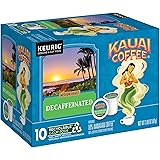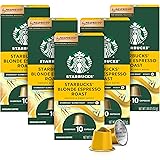Mastering the Cappuccino: Two Distinct Methods Explored for Home Baristas
Creating the perfect cappuccino at home is a rewarding endeavor for any coffee enthusiast. As the video above expertly demonstrates, there isn’t just one way to craft this beloved espresso drink. In fact, understanding the nuances between the “Third Wave Cappuccino” and the “Foamy Cappuccino” can elevate your home brewing game significantly. This guide will expand on these two distinct approaches, offering detailed insights and practical tips to help you master both methods.
The Foundation: Perfecting Your Espresso Shot
Regardless of the cappuccino style you choose, an exceptional espresso shot forms the indispensable base. The quality of your espresso directly impacts the overall flavor profile of your drink. Therefore, dialing in your espresso machine for optimal extraction is a critical first step.
For a double shot, the video suggests using an espresso dry mass of 18-20 grams. This refers to the weight of your finely ground coffee before brewing. Furthermore, the ideal espresso wet mass, or the yield of liquid espresso in your cup, should be between 34-36 grams. Achieving this ratio typically involves a brew time of 25-30 seconds. A precise brew ratio ensures a balanced extraction, avoiding over-extraction (bitterness) or under-extraction (sourness).
Using a good quality espresso machine and grinder is essential. Consistency in your grind size and tamping pressure will significantly contribute to hitting these target numbers. These parameters are crucial for developing the rich, concentrated flavor that cuts through milk and defines a great cappuccino.
Crafting the Third Wave Cappuccino: Precision and Pour Art
The Third Wave Cappuccino represents a modern, refined approach to this classic beverage. It prioritizes texture, integration, and often, visual appeal through latte art. This style is characterized by a precise ratio: one-third espresso and two-thirds microfoam. This makes it very similar to a flat white, though typically served in a slightly larger cup.
Microfoam is the hallmark of the Third Wave style. This is steamed milk with tiny, uniform bubbles, giving it a velvety, glossy texture reminiscent of wet paint. When poured, it seamlessly integrates with the espresso, creating a uniform, creamy consistency from the first sip to the last. This smooth texture is why no spoon is used for a Third Wave Cappuccino; the milk and espresso are designed to be enjoyed together without separation.
The video highlights that “no third wave cafe will serve milk that cannot be poured into art.” This underscores the expectation of high-quality microfoam. To achieve this, you’ll need 150-180 ml of cold milk. The steaming process involves incorporating air briefly at the beginning to create a thin layer of foam, then submerging the steam wand to heat the milk while gently stretching and folding it until it reaches a temperature of 140-150°F (60-65°C). The goal is to eliminate large bubbles and create that smooth, pourable consistency.
Once steamed, the milk must be swirled vigorously to combine the foam and liquid milk into a homogenous texture. This allows for the intricate designs seen in latte art. The integrated microfoam enhances the sweetness of the milk, complementing the espresso’s flavor profile rather than just sitting on top.
Embracing the Classic: The Delightful Foamy Cappuccino
In contrast to the Third Wave’s modern precision, the Foamy Cappuccino embodies a more traditional, comforting style. This rendition is defined by a distinct three-layer structure: one-third espresso, one-third milk, and one-third thick foam. It is typically smaller than a latte, emphasizing the intensity of the espresso beneath a substantial cloud of foam.
To achieve the characteristic foam for this cappuccino, the steaming technique differs. The video advises aiming for “half steamed milk and half foam,” and instructs to “double the amount of milk by allowing more air to enter.” This means you’ll introduce more air into the milk during the initial steaming phase, creating a significant volume of foam. After steaming, you should “let the milk sit for a few seconds.” This allows the denser liquid milk to separate from the lighter, coarser foam, facilitating the layered pour.
This style of cappuccino often features flavorings such as cocoa or cinnamon powder. These toppings are sprinkled generously over the thick foam, adding an aromatic and flavorful dimension that is distinct from the integrated taste of a Third Wave Cappuccino. The bold spices often provide a delightful contrast to the underlying espresso and milk, enhancing the overall sensory experience.
The Foamy Cappuccino offers a different textural journey. The initial sips are dominated by the airy foam and its toppings, gradually giving way to the liquid milk and espresso below. This distinct separation of layers is what many people associate with a classic cappuccino experience.
Third Wave vs. Foamy: Understanding the Core Differences
While both delicious, the two primary methods for preparing a cappuccino present unique characteristics. The core differences lie in their milk preparation, textural outcome, and overall presentation. Understanding these distinctions allows you to choose the method that best suits your preference or the occasion.
- Third Wave Cappuccino: Features two-thirds microfoam that is fully integrated with one-third espresso. The texture is velvety and smooth, designed for latte art, and typically enjoyed without a spoon. This method aims for a harmonious blend of flavors and textures.
- Foamy Cappuccino: Comprises one-third espresso, one-third liquid milk, and one-third thick, airy foam. This layered approach often benefits from flavorings like cocoa or cinnamon powder. The foam provides a distinct textural contrast, offering a traditional coffee shop experience.
The video points out that “size is what varies most among different cappuccinos.” Indeed, traditional foamy cappuccinos are often served in smaller cups to highlight the distinct layers, while Third Wave versions might use slightly larger cups to accommodate latte art. The creator of the video notably prefers the Third Wave Cappuccino, stating, “In my videos, I mostly do third wave cappuccino because I prefer the taste and the method.” This preference often stems from the smoother, more integrated flavor profile and the artistic expression allowed by microfoam.
Experimentation is key to discovering your favorite cappuccino. Whether you lean towards the modern elegance of a Third Wave Cappuccino or the comforting layers of a Foamy Cappuccino, practicing these techniques will undoubtedly enhance your home barista skills and lead to delightful coffee experiences.







